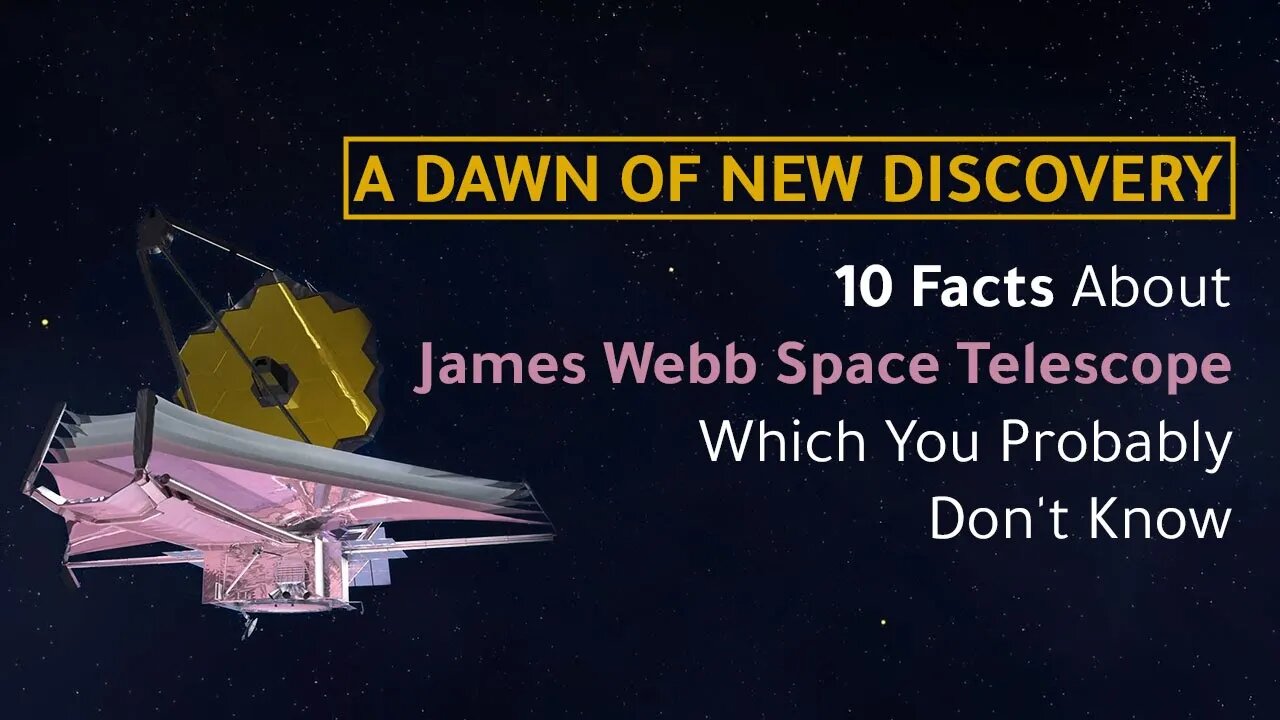Premium Only Content

A Dawn of New discovery - 10 Facts About James Webb Space Telescope Which You Probably Don't Know.
A Dawn of New Discovery
10 Facts About James Webb Space Telescope Which You Probably Don't Know.
On December 25, 2022, NASA launched its biggest, the most powerful and expensive telescope into the space named as James Webb telescope. the telescope is developed by NASA with the help of European Space Agency and the Canadian Space Agency.
In this small video we will give you 10 things about the James Webb telescope which you probably don't know. We are starting right now.
Number 1. The James Webb Telescope is the most powerful and the most expensive telescope ever built by the humans.
Number 2. For the next 30 days, James Webb telescope will travel 1 million miles away from the earth. It will orbit there for other 6 months before it can send its first feed.
Number 3. The destination of the James Webb Telescope is to reach Lagrange point. At that point, the gravity of the sun, the earth and James Webb’s own orbital momentum will keep it at a specific place without using much fuel.
Number 4. James Webb telescope has to pass through 344 "single-point failures," to be successful.
Number 5. The instruments of James Webb telescope need to maintain minus 370 degree Fahrenheit temperature to work properly. The required temperature will be maintained by built in sunshield which will prevent the heat of the sun to reach its instruments.
Number 6. The James Webb Telescope works on infrared technology, that means it can peer through space dust and see celestial bodies in infra-red.
Number 7. James Webb Telescope can even detect the light which is traveling towards earth from more than 13 billion years, that means we can literally look back into time.
Number 8. The telescope will also help us to track unknown exoplanets and whether there is any life present on those planets.
Number 9. James Webb will compare the early galaxies to current one, it will reveal a stunning data on how galaxies have evolved in time.
Number 10. The telescope is designed to spent almost 5 to10 years in space before it runs out of the fuel.
-
 LIVE
LIVE
The Officer Tatum
2 hours agoLIVE: Trump ENDORSES Mike Johnson as Elon BACKTRACKS On H-1B + MORE | Officer Tatum Show EP 32
2,261 watching -
 45:56
45:56
Kimberly Guilfoyle
2 hours agoNew Year. Same MAGA Mission, Live with Roger Stone | Ep. 183
23.6K9 -
 LIVE
LIVE
RonjnJeremy
7 hours ago $2.41 earnedClassic Wow 20th Anniversary edition HC SF, Rogue..PT8 lvl 46+ Just need to stay alive...
737 watching -
 1:50:28
1:50:28
Jesús Enrique Rosas
4 hours agoEp. 51: Gates wants CENSORSHIP, Colbert MESSES UP, AOC meltdown, Hanks LEAVING and MOAR!
63.7K18 -
 1:45:47
1:45:47
The Quartering
6 hours agoHuge Censorship Law To Pass, Trump Endorses Johnson, TikTok is Saved? & Today's News!
85.9K59 -
 53:39
53:39
PMG
3 days ago $1.25 earned"Allegations Against Diddy & Usher, $150K Bounty on Trump, RINO Speaker Caves w/Steve Baker"
6.34K -
 1:31:21
1:31:21
Tucker Carlson
5 hours agoBrigham Buhler: UnitedHealthcare CEO Assassination, & the Mass Monetization of Chronic Illness
178K209 -
 2:29:04
2:29:04
Nerdrotic
6 hours ago $11.35 earnedHappy New Years - Nerdrotic Nooner 454
76.6K13 -
 32:20
32:20
Rethinking the Dollar
5 hours agoThe U.S. Debt Crisis That Was "Made In America" w/ Paul Stone
55K10 -
 3:31
3:31
SLS - Street League Skateboarding
1 day agoCoco Yoshizawa’s 3rd Place Finish at SLS Tokyo 2024 | Best Tricks
50.4K5